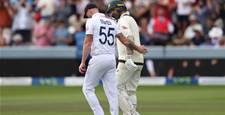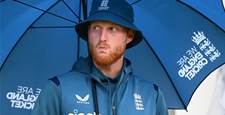The Indian squad's arrival in Florida has drawn attention from a series of Major League Baseball data analysts eager to see how they can bring their analytics to cricket.
The MLB has long been heavily stats driven as analysts collate throngs of data to help teams, players and recruiters.
Eleven members of MLB Advanced Media (MLBAM), who gather in stats for online services known as MLB Statcast and MLB At Bat, have set up a trailer at the Central Broward Regional Park where the Indian team is based to collect as much player data as possible in an effort to bring their stats expertise to cricket.

Kevin Prince, a broadcast analyst with MLBAM who is originally from Kent, England, but has been working in the USA for more than 30 years, said cricket could benefit greatly from the technology.
"We're doing some research on how can we apply our Statcast data acquisition technologies to other sports, i.e. cricket, because baseball and cricket are very similar to each other," he said.
"So that's fundamentally why we're here, to gather all the player-tracking and ball-tracking data hopefully to provide a system that can provide the Statcast type of analysis that we've perfected for baseball and hopefully provide that for cricket."
The MLBAM team has mounted six cameras to the floodlight towers at the baseball ground as well as a radar.
The cameras track player movement while the radar tracks ball movement. The crew performed similar investigations for the Caribbean Premier League and with MLBAM asked to return for the India-West Indies T20s to see what they can apply from similar baseball principles.

Per Von Rosen, a technical manager with Statcast originally from Stockholm, Sweden, said the technology was proving ever-important as teams looked to gain an edge on their rivals and improve players.
"It's the fourth-generation stats, more performance driven on the field,”. "So how hard did you pitch, how hard did you hit, exit velocity of the ball coming off the bat. In fielding, the route efficiency taken to catch the ball,” he said.
"So we know where a fielder was when the play started, we know where he caught the ball and therefore we can know which path he took and was it a straight line, did he deviate from that straight path and how fast did he react to the ball off the bat, all of these things. It's basically putting together his athletic capabilities. Some guys always happen to be in the right place to make the catch and now we're putting numbers on that."
One of the most popular data for Statcast is exit velocity. Giancarlo Stanton of the Miami Marlins, has nine of the 15 highest exit velocity measurements of the season, with a highest of 123.9 mph speed of the ball coming off the bat. Interestingly, six of the nine hits went for singles and none for home runs meaning there was not a direct link between hitting force and runs.
"The hardest you can hit a ball has to be a trajectory that's a little more flat," Rob Engel, a senior software engineer with MLBAM said. "Any time you hit a home run, you have to put a little more launch angle on the ball and you're not actually hitting it as square as you would hit a line drive. So the farthest home runs are technically hit a little softer than a hard line drive straight back to the pitcher because the bat maintains contact with the ball longer so you hit it harder."
Comparing the technology to cricket, it could mean that players who hit sixes aren't necessarily swinging or connecting harder.
Related Articles

Luck of the Draw

Harman hails lookalike Ponting as 'handsome fella'













